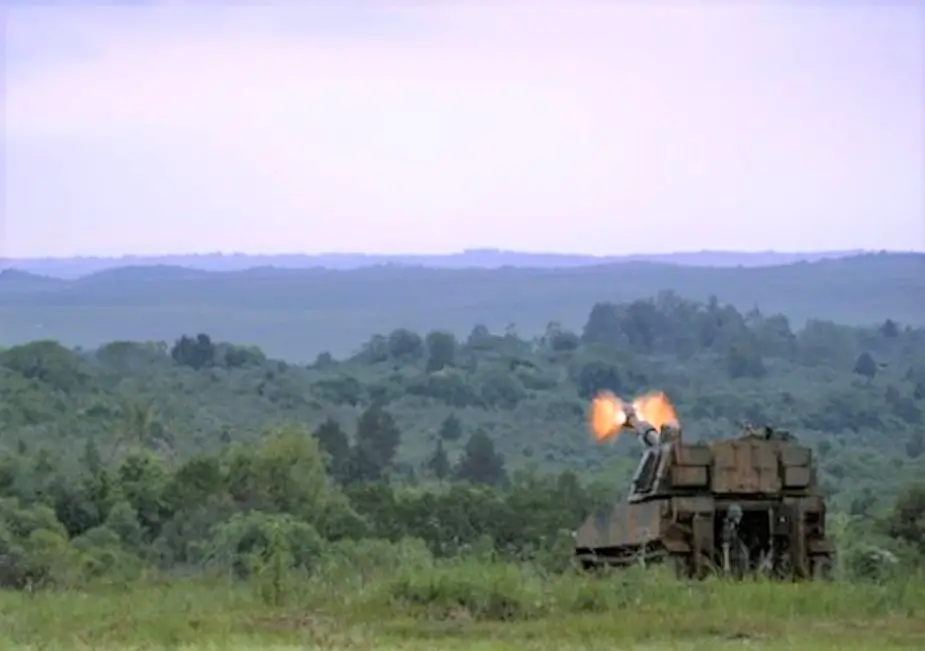The Brazilian Artillery conducted a live-fire demonstration of BAE Systems’ M109A5+ self-propelled howitzers, so indicating the introduction of the vehicles into service.

Live-fire demonstration of an M109A5+ self-propelled howitzer (Picture source: Brazilian MoD)
BAE Systems was awarded a $54 million US Government Foreign Military Sales (FMS) contract in 2016 to provide 32 upgraded M109A5+ self-propelled howitzers to the Brazilian Army. As part of the contract, BAE Systems has provided the Brazilian Army with technological know-how and support through the lifecycle of the delivered vehicles. The Brazilian M109A5+ benefit from a digitized fire mission sequencing system, as well as enhanced position and navigation systems, commander’s display unit, digital radios and remotely actuated travel lock. Chile, with 12 units, is another operator of the M109A5+.
The M109 was developed by the Ground System Division of United Defense LP (now BAE Systems Land and Armaments). It was the medium variant of a U.S. program to adopt a common chassis for its self-propelled artillery units. The light version, the M108 Howitzer (105mm), was phased out during the Vietnam War, but many were rebuilt as M109s. The M109 saw its combat debut in Vietnam. Israel used the M109 against Egypt in the 1973 Yom Kippur War and in the 1982 and 2006 Lebanon Wars. Iran used the M109 in the Iran–Iraq War in the 1980s. The M109 saw service with the British, Egyptian and Saudi Arabian Armies in the 1991 Gulf War. The M109 also saw service with the U.S. Army in the Gulf War, as well as in the Iraq War from 2003–2011.
Upgrades to the cannon, ammunition, fire control, survivability, and other electronics systems over the design's lifespan have expanded the system's capabilities, including tactical nuclear projectiles, Cannon Launched Guided Projectiles (CLGP or Copperhead), Rocket Assisted Projectile (RAP), FAmily of SCAtterable Mines (FASCAM), and improved conventional munitions (the Dual-Purpose Improved Conventional Munition, DPICM).














